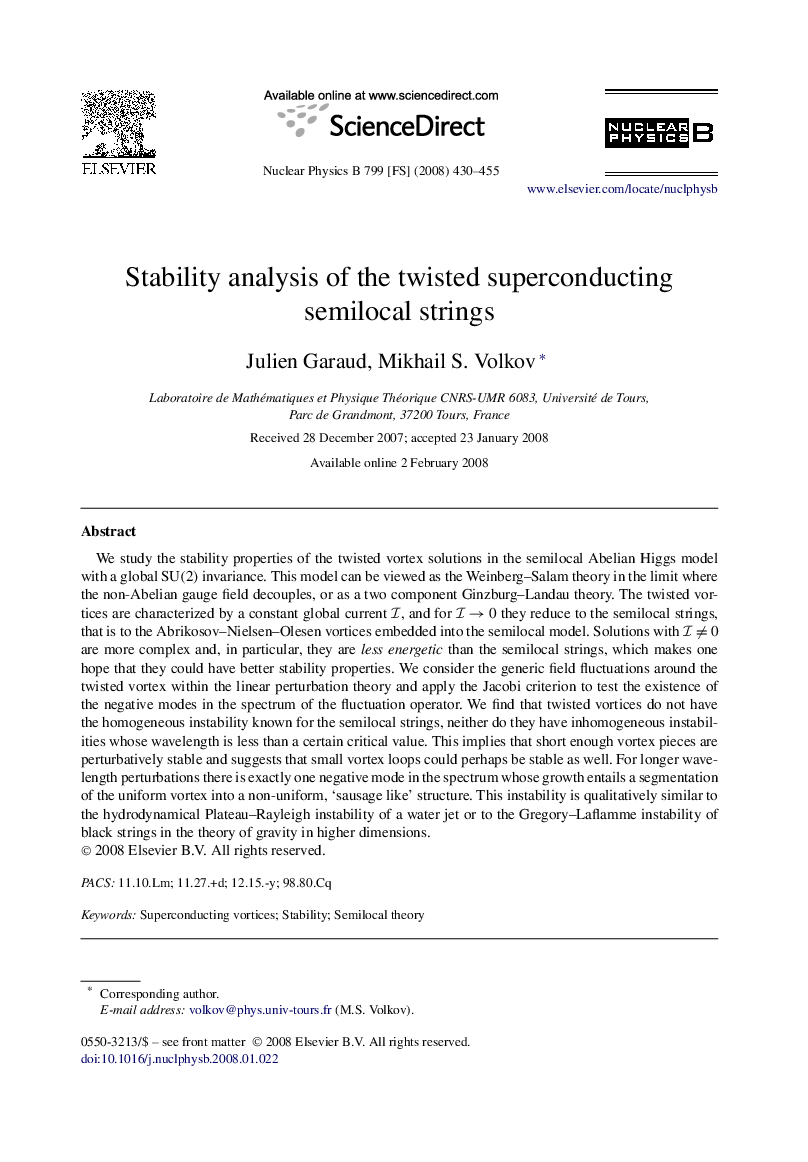| Article ID | Journal | Published Year | Pages | File Type |
|---|---|---|---|---|
| 1843831 | Nuclear Physics B | 2008 | 26 Pages |
Abstract
We study the stability properties of the twisted vortex solutions in the semilocal Abelian Higgs model with a global SU(2) invariance. This model can be viewed as the Weinberg-Salam theory in the limit where the non-Abelian gauge field decouples, or as a two component Ginzburg-Landau theory. The twisted vortices are characterized by a constant global current I, and for Iâ0 they reduce to the semilocal strings, that is to the Abrikosov-Nielsen-Olesen vortices embedded into the semilocal model. Solutions with Iâ 0 are more complex and, in particular, they are less energetic than the semilocal strings, which makes one hope that they could have better stability properties. We consider the generic field fluctuations around the twisted vortex within the linear perturbation theory and apply the Jacobi criterion to test the existence of the negative modes in the spectrum of the fluctuation operator. We find that twisted vortices do not have the homogeneous instability known for the semilocal strings, neither do they have inhomogeneous instabilities whose wavelength is less than a certain critical value. This implies that short enough vortex pieces are perturbatively stable and suggests that small vortex loops could perhaps be stable as well. For longer wavelength perturbations there is exactly one negative mode in the spectrum whose growth entails a segmentation of the uniform vortex into a non-uniform, 'sausage like' structure. This instability is qualitatively similar to the hydrodynamical Plateau-Rayleigh instability of a water jet or to the Gregory-Laflamme instability of black strings in the theory of gravity in higher dimensions.
Related Topics
Physical Sciences and Engineering
Mathematics
Mathematical Physics
Authors
Julien Garaud, Mikhail S. Volkov,
